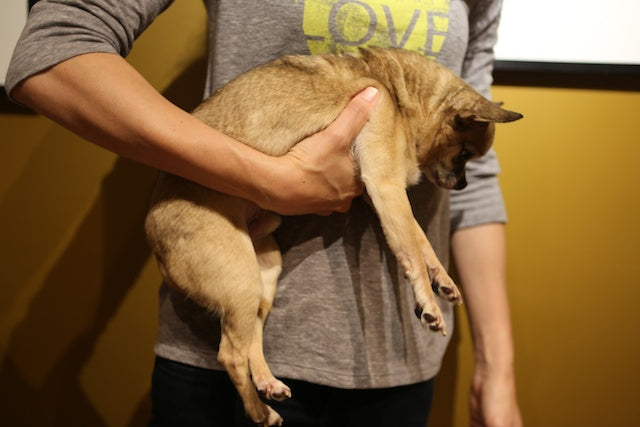How to Carry a Chihuahua and Other Dogs
It looks like the world is going to the small dogs. Houses are getting more expensive and having a Great Dane or Saint Bernard is like trying to fit an elephant in the house. It's natural that many people are inclined to get a smaller, 'fuel efficient,' green-certified dog that often weighs only a few pounds.
What I've noticed over the years is that these little pooches are prone to two common problems, poor breeding (I hate puppy mills!) and back issues.
I've Become Intrigued by a Very Interesting Pattern
- The dogs that suffer from back problems are usually carried around their underarms with their hind end hanging down over the arm
- Their back muscles are commonly contracted and twisted to one side
- They are commonly carried only on one side and the guardians are unaware that they do this
Thanks to the kindness of a client, I've been able to include the following images to demonstrate the most common mistakes people make when carrying their dogs.

Figure 2. As you can see in the picture above, carrying a dog under your arm without supporting their hind end places the thoracic lumbar spine in an unnaturally curved position. If the dog is carried on one side repeatedly, a one-sided muscle shortening will likely result in back problems.

Figure 3. This picture is a little better. You can see that the hind end is supported and is not hanging down. However, the foreleg is still in an unnatural extension and the back is flexed excessively. If a dog is carried like this often, you'll see increased curvature and possible back issues.

Figure 4. The back arch is much more straight here and the arms are surrounding the torso for more support. The foreleg is still in an unnatural position.

Figure 5. You can see that the thumb is in the armpit here, which is not as safe as moving the palm back to support the chest.

Figure 6. Another example of too much strain on the shoulder region.

Figure 7. Lucky number 7. This is the best way to carry a little dog. It's much better to create a platform with your arms - support the back and allow the front legs to be in a natural sitting or lying down position.
Your Dog Is as Old as His/Her Spine
My experience is there is a surprisingly high number of dogs with back problems from being carried around. A healthy spine is important for many reasons - to avoid pain, for proper sensation, due to its relationship to the internal organs and for movement because the spine is integral to the movement of limbs.
The lower thoracic and lumbar regions are responsible for the proper function of the kidneys, adrenal glands, the small and large intestines, bladder, sphincter and hind leg strength.
If Your Dog Suffers From Back Issues Here's What I Suggest:
- Carry him or her with the back supported and forelegs in a natural position.
- Never lift your dog by pulling their front legs.
- Consider checking your dog’s mineral levels. The muscles and back often reflect deficiencies and toxicity.
- A well-nourished body has a much greater capacity to recover. A natural raw or cooked diet is preferred.
- Give your dog all-natural essentials to ensure proper muscle function and muscle fiber regeneration. The body needs all the building blocks to function properly, and minerals and nutrients are severely depleted in our soil and food. The right supplements will make a huge difference in your dog's ability to recover from injuries. Avoid cheap synthetic products.
- Visit an experienced chiropractor and physiotherapist (physical therapist) to check the spine.
- Take your dog for daily one to two-hour walks. The stronger your dog is, the less likely they will suffer from back pain.
If you like to carry your dog around a lot, you now know how to prevent injuries. However, the best place for your dog is close to the ground walking on all fours!
























